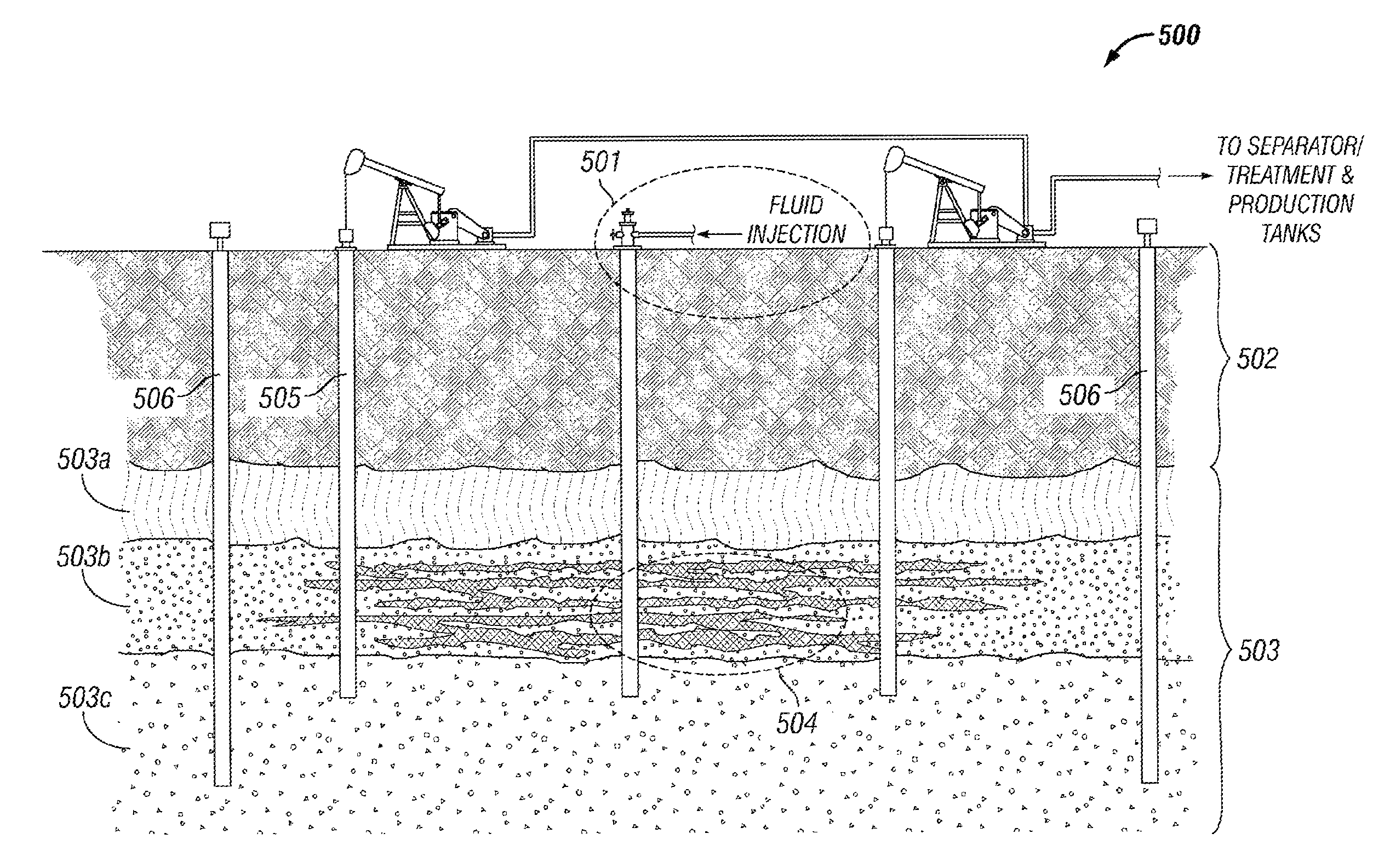Kerogen extraction from subterranean oil shale resources
a technology of oil shale resources and kerogen, which is applied in the direction of survey, insulation, borehole/well accessories, etc., can solve the problems of long timeframe, unreliable oil recovery, and high energy consumption in the world, and achieves the effect of reducing the cost of shell approach, and increasing the cost of oil shale recovery
- Summary
- Abstract
- Description
- Claims
- Application Information
AI Technical Summary
Benefits of technology
Problems solved by technology
Method used
Image
Examples
example 1
[0069]This Example serves to illustrate how shale in a subsurface formation can be sampled and analyzed prior to fracturing and / or rubblizing, in accordance with some embodiments of the present invention.
[0070]Whole or conventional cores can be obtained using standard core sampling techniques known in the art and using bits such as Baker Hughes INTEQ coring bits. Sidewall and sidewall rotary cores can also be obtained, but these are typically smaller and generally of lower quality. Once obtained, the core samples can be subjected to a variety of analyses including, but not limited to, core gamma analysis, density, circumferential imaging and computed tomography (CT) scanning, fracture analysis, permeability, porosity, hydrocarbon recovery when exposed to the reactive fluid, electrical measurements, thermal conductivity measurements, rock mechanics, X-ray diffraction (XRD), nuclear magnetic resonance (NMR), total organic carbon (TOC), fluorescence and / or infrared spectroscopy, etc.
[0...
example 2
[0073]This Example serves to illustrate fracturing and / or rubblizing of shale in a subsurface shale formation so as to increase fluid accessibility to the kerogen contained therein, in accordance with some embodiments of the present invention, and particularly within the context of the exemplary system embodiment depicted in FIG. 5.
[0074]Referring to FIG. 5, integrated system 500 comprises establishing an injection well 501 that extends into the subsurface through the (e.g., Uinta) formation 502 and the (e.g., Green River) formation 503, wherein the latter is subdivided into three zones (503a, 503b, and 503c). Fluids are injected into the formation via injection well 501 and provide a fractured formation 503b having increased fluid accessibility to the kerogen contained therein. Such fluid access further provides for contacting the kerogen with a reactive fluid and extraction fluid so as to extract the mobile kerogen-based product out of the formation via one or more producing wells...
example 3
[0075]This Example serves to illustrate how the fracturing and / or rubblizing of shale in a subsurface shale formation can be monitored, in accordance with some embodiments of the present invention.
[0076]In lieu of, or in addition to, the groundwater monitoring well(s) described in Example 2, tiltmeters can be installed in a patterned arrangement on the surface of the shale formation. The tiltmeter installations would be in 8.5 inch holes, 25 feet deep, and lined with PVC pipe and perhaps a little cement on the bottom. They would be capped and have a solar panel for data collection. Geophones can also be installed either at the surface or sub-surface to gather micro-seismic information to help track fracture growth.
PUM
 Login to View More
Login to View More Abstract
Description
Claims
Application Information
 Login to View More
Login to View More - R&D
- Intellectual Property
- Life Sciences
- Materials
- Tech Scout
- Unparalleled Data Quality
- Higher Quality Content
- 60% Fewer Hallucinations
Browse by: Latest US Patents, China's latest patents, Technical Efficacy Thesaurus, Application Domain, Technology Topic, Popular Technical Reports.
© 2025 PatSnap. All rights reserved.Legal|Privacy policy|Modern Slavery Act Transparency Statement|Sitemap|About US| Contact US: help@patsnap.com



